[social_warfare]
10 Essential Items to Pack for an African Safari
Heading on safari and not sure what items to pack? We’ve got you covered!
Picture this: you’re bouncing along a dusty trail, the sun casting a golden hue over the savannah, when suddenly, a herd of elephants comes into view. That’s the magic of an African safari. But to fully enjoy this experience, packing smart is key.
This isn’t your typical vacation where you can get by with just a swimsuit and flip-flops. You need to be prepared for everything from sweltering heat to chilly evenings, and from dusty roads to unexpected rain showers.
Here’s your ultimate guide to essential items for an African safari, ensuring you’re prepared for whatever the wild throws your way.
1. Lightweight Clothing
When it comes to safari wear, think light and layered.
The African bush can be unpredictable, with temperatures fluctuating from dawn to dusk. That’s why breathable fabrics and neutral colors are your best friends.
Think khaki, olive, and beige – not only do these colors blend into the environment, but they also help keep you cool and unassuming to the wildlife.

Why Lightweight Clothing Matters
You’ll want clothes that dry quickly and are comfortable to wear for long periods. Cotton and linen are great options, but modern moisture-wicking fabrics can be even better, especially if you’re prone to sweating. Layers are crucial because mornings and evenings can be surprisingly chilly, while midday temperatures soar.
- Tops: Pack a mix of short and long-sleeved shirts. Long sleeves can protect you from the sun and insects, especially during evening game drives. Look for options with mesh ventilation to keep you cool.
- Bottoms: Convertible pants that zip off into shorts are incredibly versatile. They allow you to adapt to the temperature changes throughout the day without needing a complete wardrobe change.
- Outerwear: A lightweight fleece or jacket is perfect for those early morning drives when the air is crisp. Make sure it’s something you can easily shed as the day warms up.
- Accessories: A scarf or bandana can protect you from dust and sun, and it can double as a pillow on bumpy rides.
Where to Buy
Brands like Columbia, REI, and The North Face offer a wide range of safari-friendly clothing.
Look for sales and outdoor gear outlets to score some deals. Online stores like Amazon also have plenty of options, often with customer reviews to help you make informed choices.
2. Sun Protection
The African sun is no joke. It’s intense, unrelenting, and can quickly turn your dream safari into a sunburnt nightmare if you’re not careful.
Sun protection is not just about comfort; it’s about health and safety.
Essential Sun Protection Items
- Wide-Brimmed Hat: This is non-negotiable. A hat with a brim all the way around provides the best protection for your face, neck, and ears. Look for ones with an adjustable chin strap to keep it in place during those windy game drives.
- High-SPF Sunscreen: Go for a broad-spectrum sunscreen with an SPF of at least 30. Apply generously and reapply throughout the day, especially after sweating or wiping your face.
- Polarized Sunglasses: Protect your eyes from UV rays and reduce glare. Polarized lenses are a game-changer for spotting wildlife in the bright sun. They reduce glare off surfaces and can even enhance your ability to see through reflections on water.
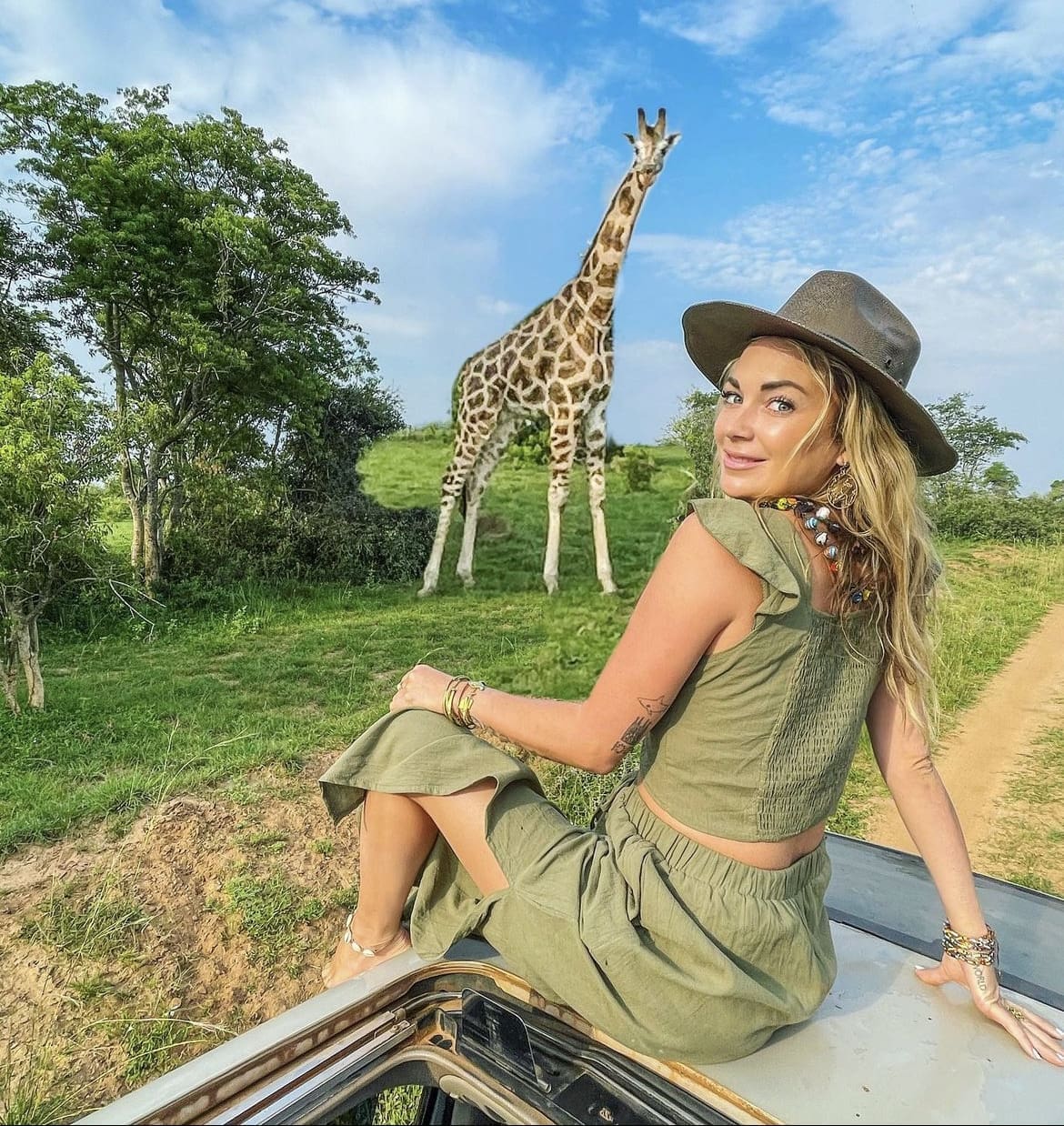
Where to Buy
Outdoor stores like REI and Cabela’s have a great selection of sun protection gear.
For convenience, Amazon and other online retailers offer a variety of options with customer reviews to guide your purchase.
Don’t forget to check out travel-focused stores that often carry sun protection products designed specifically for outdoor adventures.
3. Insect Repellent
Nothing ruins a sunset safari like a swarm of mosquitoes.
Africa’s diverse ecosystems are home to many insects, some of which carry diseases like malaria. That’s why insect repellent is an absolute must-have on your safari packing list.
Trust me, you’ll want to be prepared to fend off these pesky critters so you can focus on the real adventure: the wildlife.
Choosing the Right Insect Repellent
- DEET-Based Repellents: DEET is the gold standard for repelling mosquitoes. Products with 20-50% DEET are effective and provide long-lasting protection. Off! and Repel are popular brands that offer reliable DEET-based options.
- Natural Alternatives: If you prefer a natural option, look for repellents containing ingredients like lemon eucalyptus oil. While they may need to be applied more frequently, they can be just as effective. Brands like Murphy’s Naturals and Repel Lemon Eucalyptus offer good natural alternatives.
Tips for Staying Bug-Free
- Clothing Treatment: Consider treating your clothing with permethrin before your trip. This insecticide binds to fabric and remains effective through several washes, providing an extra layer of protection.
- Bug Netting: For extra peace of mind, especially at night, pack a small mosquito net to cover your sleeping area. Some lodges provide them, but it’s always good to have your own just in case.
Where to Buy
Insect repellents are widely available at pharmacies, outdoor stores, and online.
Amazon offers a variety of brands and types, often with helpful customer reviews. If you’re looking for natural options, health food stores and specialty online retailers are good places to check.
4. Comfortable Footwear
The African bush is not the place to break in new shoes.
Whether you’re hiking through rugged terrain or strolling around the lodge, comfortable and sturdy footwear is essential.
Your feet will be your best friends on this trip, so treat them well.
Choosing the Right Footwear
- Hiking Boots: A good pair of hiking boots is essential for game walks. Look for boots that are waterproof, offer good ankle support, and have a sturdy sole for traction. Merrell, Salomon, and Columbia are reliable brands that offer a range of options for different terrains.
- Sandals: For downtime at the lodge, a comfortable pair of sandals is perfect. Choose something with good arch support and a secure fit, like Tevas or Chacos. These can double as quick footwear for short, easy walks around the camp.

Where to Buy
Outdoor retailers like REI, Bass Pro Shops, and sporting goods stores carry a wide selection of hiking boots and sandals.
For online shopping, Zappos and Amazon offer a variety of brands with extensive customer reviews to help you make the right choice.
5. Binoculars
Spotting wildlife in the distance is all part of the safari thrill.
A good pair of binoculars can bring those distant animals into stunning clarity, turning a barely visible speck into an awe-inspiring sight.
Trust me, your safari experience isn’t complete without them.
Choosing the Right Binoculars
- Magnification and Objective Lens: Look for binoculars with a magnification of 8x to 10x and an objective lens diameter of 42mm to 50mm. This balance provides clear, bright images without being too bulky or heavy.
- Field of View: A wider field of view helps you spot moving animals more easily. A good field of view is around 330 feet at 1000 yards for an 8x magnification.
- Weight and Size: Lightweight binoculars are easier to carry around all day. Compact models are convenient, but make sure they don’t compromise on image quality.
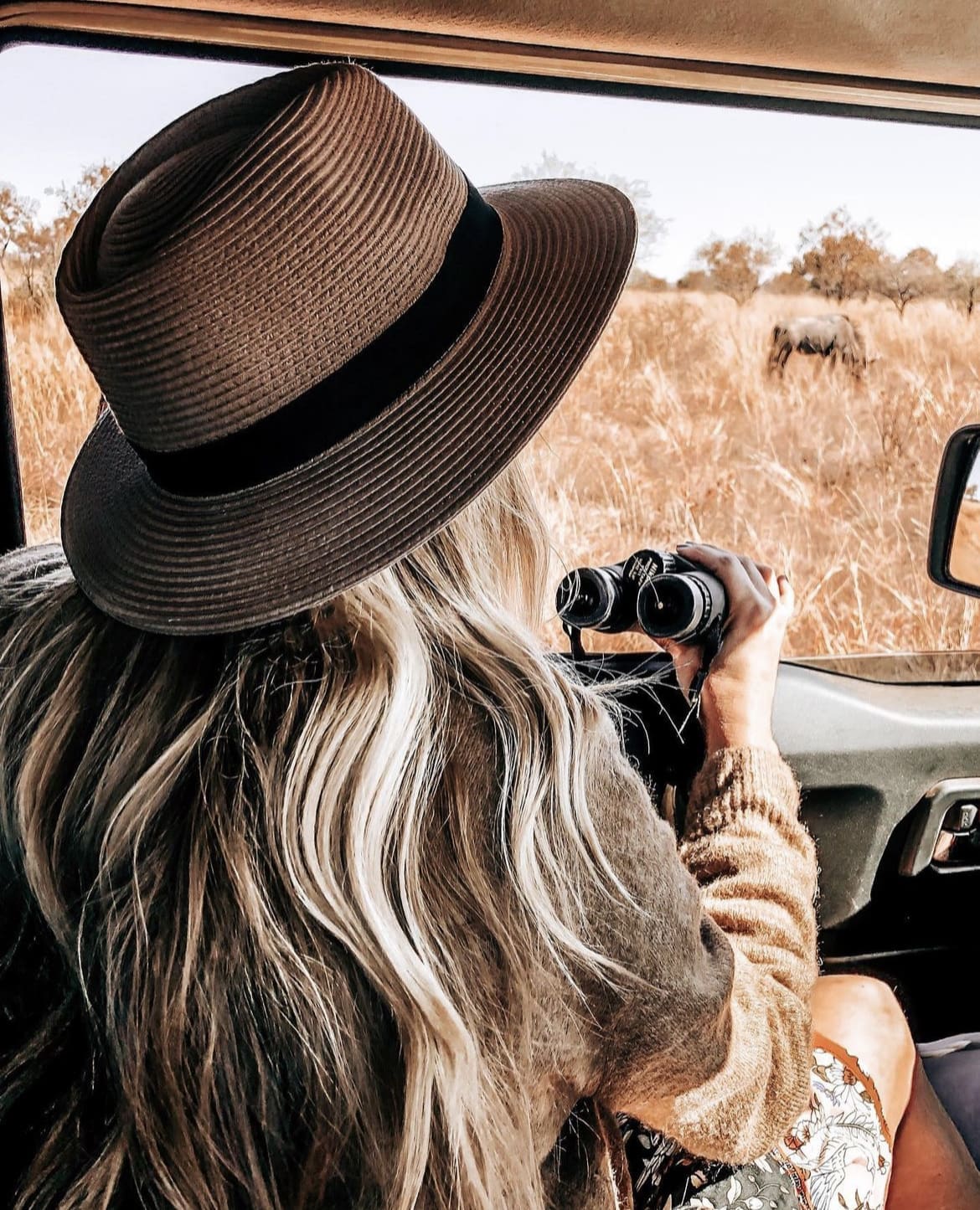
Top Picks for Safari Binoculars
- Celestron Nature DX 8×42: Affordable, durable, and great for beginners. – Buy Here
- Nikon Monarch 5 10×42: Offers excellent image quality and is perfect for serious wildlife enthusiasts. – Buy Here
- Vortex Optics Diamondback HD 10×42: Known for durability and crystal-clear views, these are ideal for more experienced safari-goers. – Buy Here
Where to Buy
Specialty stores like B&H Photo and Video, outdoor retailers like REI, and online platforms like Amazon offer a wide range of binoculars.
Look for customer reviews and expert recommendations to find the best option for your needs.
6. Camera and Accessories
Capturing the awe-inspiring moments of your safari with a quality camera can make your adventure even more memorable.
Whether you’re a photography enthusiast or just want to document your trip, having the right gear is crucial.
Choosing the Right Camera
- DSLR or Mirrorless: For high-quality photos, a DSLR or mirrorless camera with a good zoom lens (at least 200mm) is ideal. Brands like Canon, Nikon, and Sony offer excellent options. The Canon EOS Rebel T7 and Nikon Z50 are popular choices for their balance of performance and ease of use.
- Compact Camera: If you prefer something less bulky, consider a compact camera with a powerful zoom, like the Panasonic Lumix ZS200 or the Sony RX100 series.
- Action Camera: For capturing videos or wide-angle shots, an action camera like a GoPro can be a fun addition. They’re durable and easy to use in various conditions.
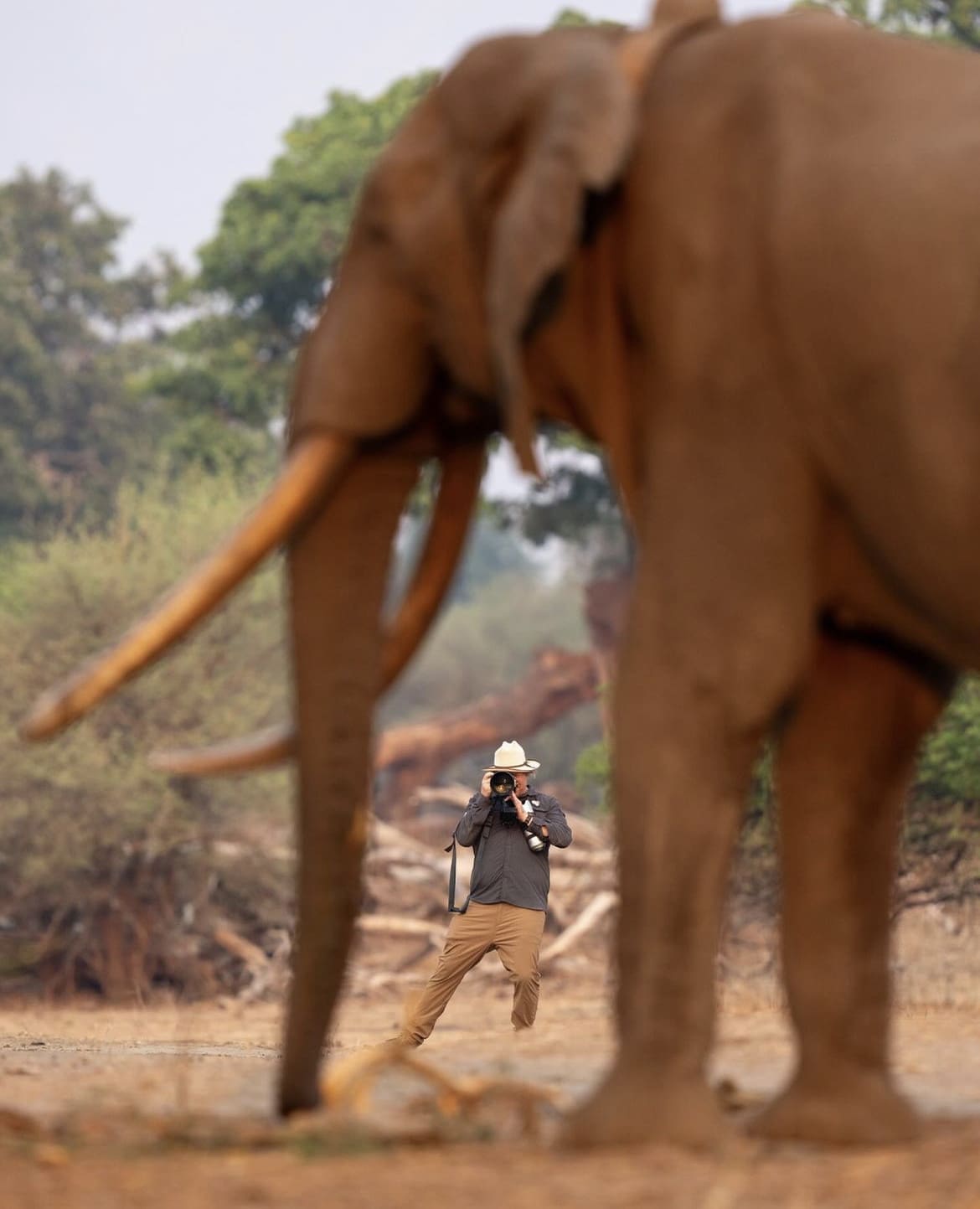
Essential Accessories
- Extra Memory Cards: You’ll be taking a lot of photos and videos, so bring several high-capacity memory cards. SanDisk and Lexar are reliable brands.
- Spare Batteries: Safaris can last all day, and there might not be convenient places to recharge. Pack extra batteries to ensure you don’t miss any moments.
- Waterproof Bag: Dust and unexpected rain showers can be detrimental to your gear. A waterproof bag or case will protect your equipment from the elements.
Where to Buy
Electronics stores like Best Buy, photography specialists like B&H Photo and Video, and online retailers such as Amazon offer a wide range of cameras and accessories.
Look for bundle deals that might include extra memory cards, batteries, and carrying cases.
7. Travel First Aid Kit
Venturing into the wild means you need to be prepared for minor mishaps.
While safari lodges and guides are usually well-equipped for emergencies, having your own travel first aid kit can be a lifesaver for minor injuries and ailments.
It’s all about being prepared so you can enjoy your adventure with peace of mind.
Essential Items for Your First Aid Kit
- Basic Medical Supplies: Include adhesive bandages in various sizes, gauze pads, medical tape, and antiseptic wipes. These basics cover minor cuts and scrapes.
- Pain Relief and Medication: Pack over-the-counter pain relievers like ibuprofen or acetaminophen, anti-diarrheal medication, and antihistamines for allergic reactions.
- Personal Prescriptions: Bring enough of any prescribed medication to last your entire trip, plus a few extra days’ worth, just in case.
- Blister Treatment: Adhesive moleskin and blister pads can be lifesavers if you develop hotspots or blisters from hiking.
- Other Essentials: Include a digital thermometer, tweezers, scissors, and safety pins. A small tube of hydrocortisone cream for bug bites and a small bottle of antiseptic liquid like iodine or hydrogen peroxide are also useful.
Where to Buy
Pharmacies like CVS or Walgreens offer pre-made first aid kits that you can supplement with additional items.
Outdoor stores like REI also carry compact and durable kits designed for travel. For convenience, Amazon has a variety of options, often with detailed customer reviews.
Alternatively – Buy Here
8. Reusable Water Bottle
Hydration is critical, especially under the hot African sun.
A durable, reusable water bottle is not only environmentally friendly but also ensures you have access to water throughout your safari.
Staying hydrated will keep you feeling good and ready to enjoy all the adventure has to offer.
Choosing the Right Water Bottle
- Material: Stainless steel bottles are durable and can keep your water cold for hours. Brands like Hydro Flask and Klean Kanteen are excellent choices. BPA-free plastic bottles are lighter but might not keep your water as cold.
- Capacity: Aim for a bottle that holds at least 1 liter (32 ounces). This will reduce the number of times you need to refill it throughout the day.
- Built-In Filter: Consider a water bottle with a built-in filter, like those from LifeStraw or Grayl. These are great for ensuring safe drinking water when tap water quality is questionable.
Where to Buy
Outdoor retailers like REI and Cabela’s offer a wide selection of high-quality water bottles.
Online platforms like Amazon provide numerous options, often with customer reviews to help you choose the best one for your needs. Specialty stores that focus on travel gear are also good places to find bottles with built-in filters.
9. Travel Guide and Maps
Enhancing your safari experience with knowledge and navigation tools can make your trip more enjoyable and meaningful.
A detailed travel guide and reliable maps of the area provide valuable context and help you make the most of your adventure.
Plus, they can be lifesavers if you find yourself off the beaten path.
Choosing the Right Travel Guide
- Comprehensive Coverage: Look for a guide that covers not only the wildlife but also the geography, culture, and history of the regions you’ll be visiting. Guides like “The Safari Companion” by Richard D. Estes or “Lonely Planet’s Guide to African Wildlife” are great choices.
- Practical Tips: Ensure the guide includes practical information such as local customs, safety tips, and travel advice. This can help you navigate local interactions and make informed decisions.
- Portable Format: Choose a guide that is easy to carry. Compact and lightweight editions are preferable, especially when you’re on the move.
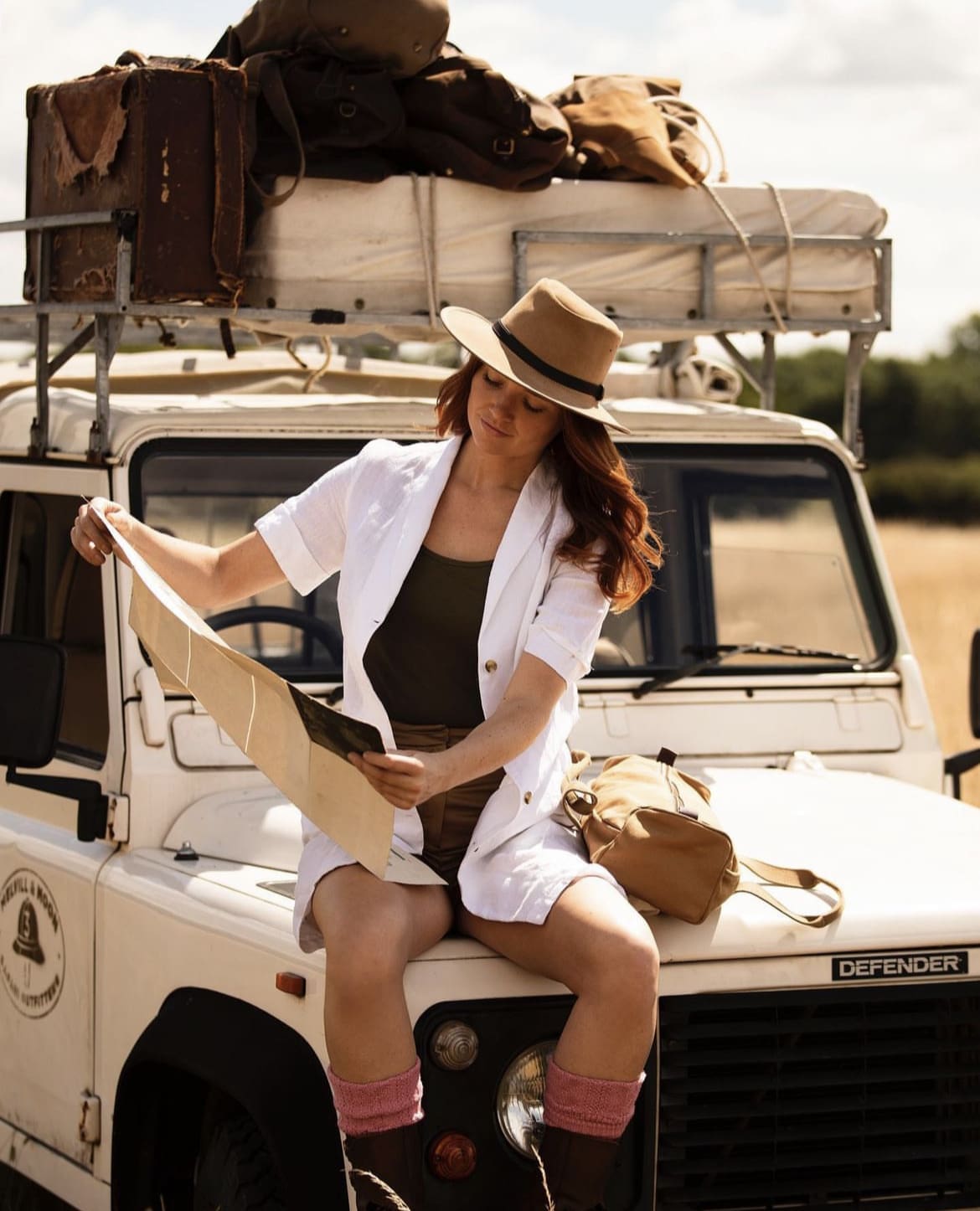
Maps
- Detailed and Accurate: Maps should provide detailed information about the terrain, park boundaries, and key landmarks. Topographical maps are excellent for understanding the landscape.
- Digital Maps and Apps: Consider using digital maps or apps like Maps.me or Gaia GPS. These can be pre-downloaded for offline use, ensuring you’re never without a map, even when you don’t have internet access.
- National Park Maps: Many safari parks provide detailed maps at the entrance. These maps are tailored to the specific park and highlight important routes and points of interest.
Where to Buy
Bookstores like Barnes & Noble or travel-focused stores like Lonely Planet have a wide selection of travel guides. Amazon also offers a variety of guides and maps with customer reviews. For digital maps and apps, check the App Store or Google Play Store.
10. Backpack
A small, comfortable backpack is perfect for carrying your daily essentials during game drives and walks.
It’s your go-to bag for everything you might need on a day out in the bush, ensuring you have all the necessities close at hand without being overburdened.
Choosing the Right Backpack
- Size and Capacity: A 20-30 liter daypack is typically sufficient for day trips. It’s big enough to carry essentials without being too bulky.
- Comfort and Fit: Look for padded shoulder straps, a breathable back panel, and an adjustable sternum strap for added comfort. Brands like Osprey, Deuter, and Patagonia offer daypacks designed for comfort and durability.
- Compartments and Pockets: Multiple compartments help keep your gear organized. Look for packs with water bottle holders, a main compartment for larger items, and smaller pockets for accessories like your camera and binoculars..
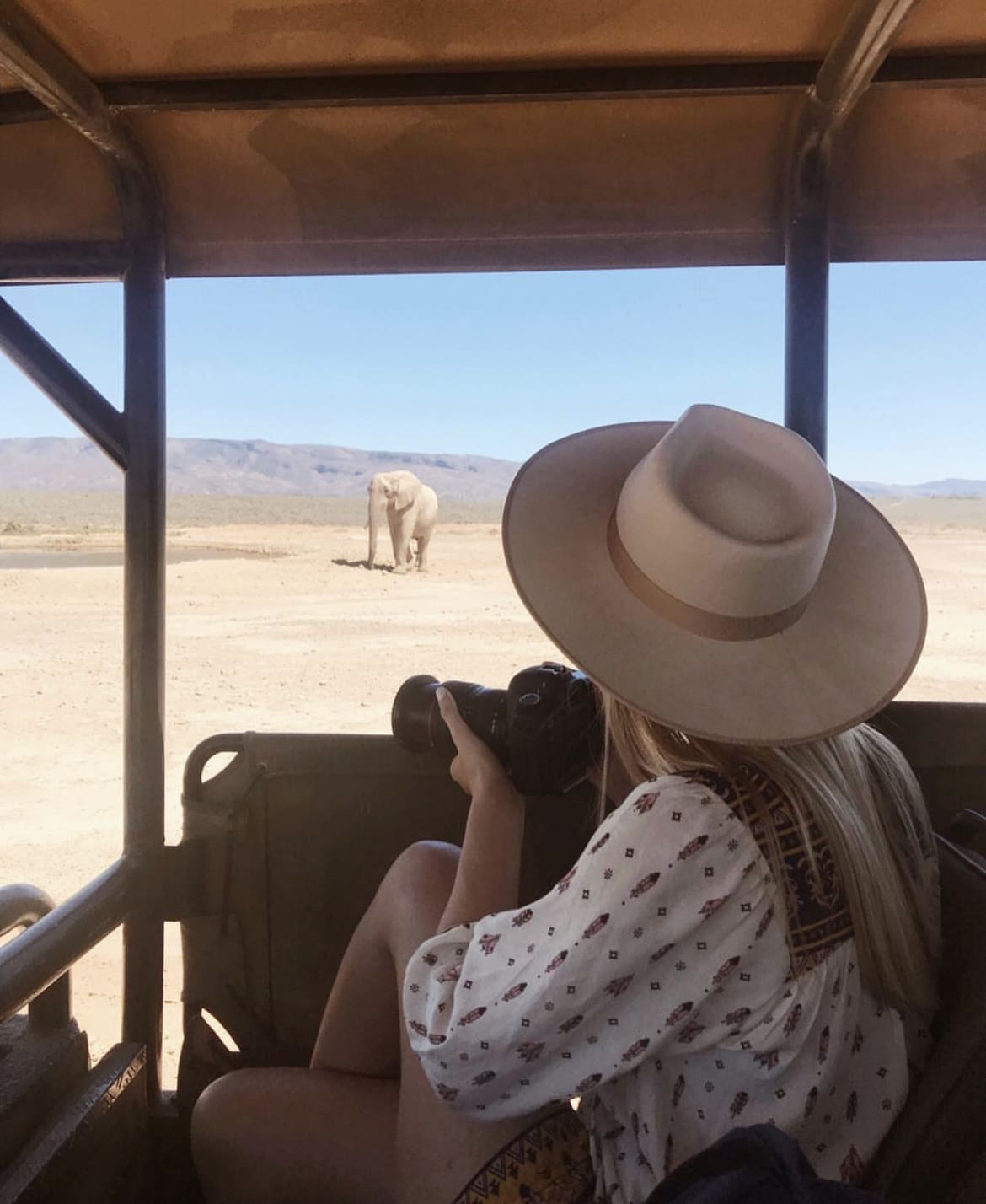
Where to Buy
Outdoor retailers like REI, Bass Pro Shops, and specialty travel stores carry a variety of daypacks.
Online platforms like Amazon offer numerous options with detailed reviews and ratings. Look for daypacks that are well-reviewed for durability and comfort.
